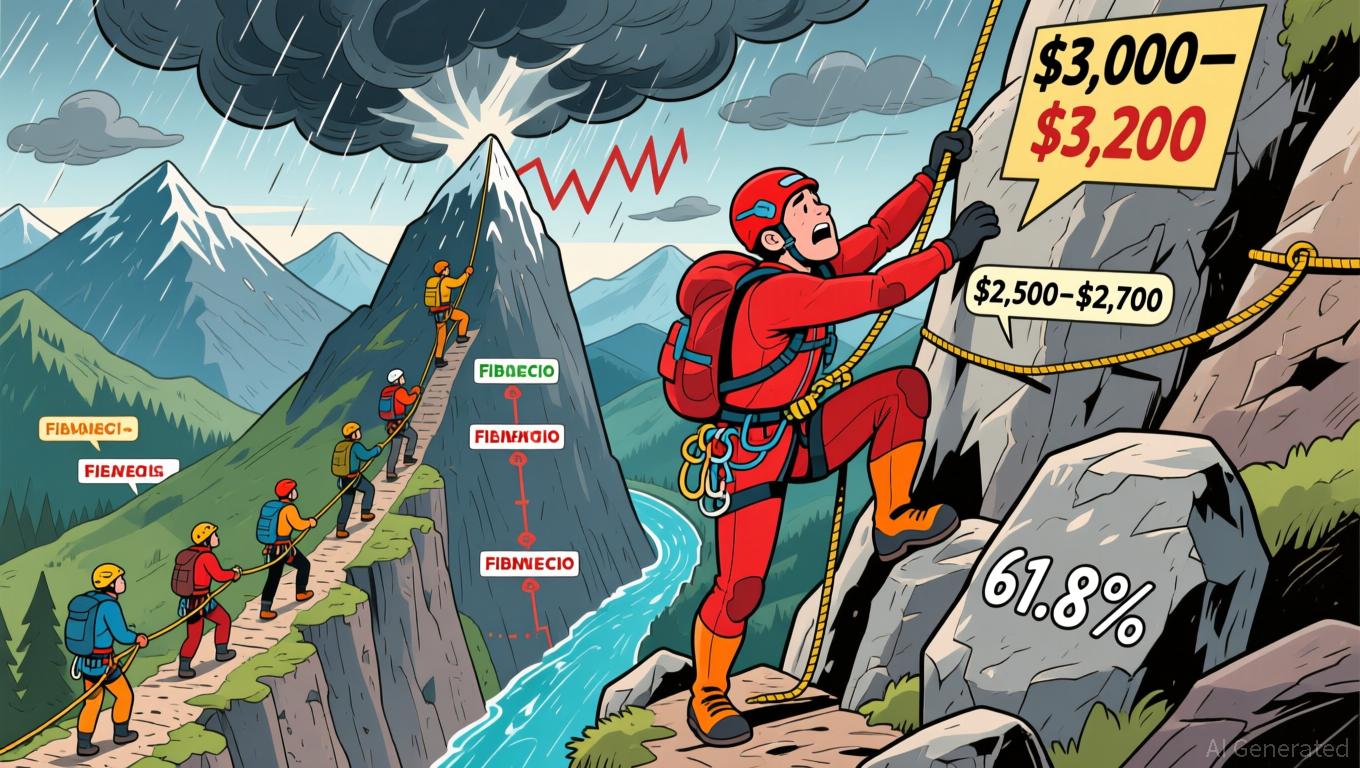South Korea Seeks to Prevent Capital Outflow by Regulating Stablecoins Pegged to the Won
- South Korea’s Democratic Party established a Digital Asset Task Force to draft stablecoin regulations, targeting capital flight and financial stability amid $40.6B in Q1 2025 outflows. - The initiative prioritizes won-based stablecoin policies, collaboration with regulators, and public consultations to balance innovation with investor protection and monetary sovereignty. - Bipartisan efforts face competition from the People Power Party’s July legislation, yet both aim to pass laws by year-end, focusing o

The Democratic Party, which currently governs South Korea, has set up a Digital Asset Task Force to create thorough regulations for stablecoins and other digital assets. This move, announced in September 2025, is intended to address rising worries about capital outflows and the stability of the financial system. The party aims to pass new laws during both the regular and year-end National Assembly sessions, focusing on rules for the creation, distribution, and management of digital assets. Led by Representative Lee Jung-moon, the task force stresses that South Korea should “take the lead” in the global “blockchain and digital asset boom” rather than fall behind South Korea's Ruling Party Task Force Aims at Crypto, Stablecoin Oversight [ 1 ]. The urgency is highlighted by statistics showing $40.6 billion in digital assets moved overseas in the first quarter of 2025, with stablecoins such as
The task force’s approach involves developing a stablecoin policy based on the Korean won to counteract the dominance of U.S. dollar-backed stablecoins, and working closely with organizations like the Financial Services Commission (FSC), the Financial Supervisory Service, and the Bank of Korea. To gather input from all stakeholders, public hearings will be organized with cryptocurrency exchanges and fintech firms South Korea's Ruling Party Task Force Aims at Crypto, Stablecoin Oversight [ 1 ]. The Democratic Party is also facing rivalry from the People Power Party, which put forward its own stablecoin bill in July, leading to differing priorities in parliament. Despite ongoing debates, both parties generally agree on passing new regulations by the end of the year South Korea's Ruling Party Task Force Aims at Crypto, Stablecoin Oversight [ 1 ].
Momentum is building in South Korea’s stablecoin market, with regulated won-pegged tokens like KRW1 (issued by BDACS through Woori Bank) and Kakao’s KRWGlobal/KRWKaia trademarks pointing to a trend toward domestically anchored digital assets. Peter Chung from Presto Labs has pointed out that the legislation should prioritize consumer safeguards, including rules for asset custody, transparency requirements, and insurance protections South Korea's Ruling Party Task Force Aims at Crypto, Stablecoin Oversight [ 1 ]. Experts expect the new rules to favor “innovation sandboxes” that encourage experimentation, rather than strict regulatory controls, in line with the government’s growth-oriented policies South Korea's Ruling Party Task Force Aims at Crypto, Stablecoin Oversight [ 1 ].
The Democratic Party’s plan features a Digital Asset Basic Act, submitted in June 2025, which would require issuers of won-backed stablecoins to obtain licenses and maintain a minimum capital of 500 million won. The proposed law also expands the definition of digital assets and gives the FSC the authority to investigate and penalize unfair trading practices South Korea Unveils Comprehensive Digital Asset Regulation [ 3 ]. Although the Bank of Korea remains cautious about the impact of private stablecoins on monetary policy, the new legislation is designed to meet global standards and even surpasses frameworks like the U.S. GENIUS Act South Korea Unveils Comprehensive Digital Asset Regulation [ 3 ]. The task force’s work aims to make South Korea a frontrunner in digital asset regulation, balancing progress with investor security South Korea’s Bold Leap into Digital Asset Regulation [ 4 ].
Key hurdles include managing the complexities of different stablecoin structures and reducing systemic risks. The task force must create adaptable regulations that can keep up with technological changes while remaining flexible. International cooperation will also be essential to align standards and prevent regulatory loopholes South Korea’s Bold Leap into Digital Asset Regulation [ 4 ]. As institutional interest in
Disclaimer: The content of this article solely reflects the author's opinion and does not represent the platform in any capacity. This article is not intended to serve as a reference for making investment decisions.
You may also like
CME Suspension: Global Market Vulnerabilities Revealed by Thermodynamic Constraints
- CME Group halted Globex trading on Nov 28, 2025 due to CyrusOne cooling system failure in Chicago, freezing 90% of global derivatives markets. - The outage caused erratic price swings in gold/silver and disrupted EBS forex platforms, exposing vulnerabilities in third-party data center reliance. - Despite post-holiday timing softening immediate impact, the incident highlighted systemic risks from thermodynamic limits in AI-era infrastructure. - CME faces pressure to build redundant systems as it expands c

Turkmenistan's Approach to Cryptocurrency: Navigating Government Oversight and Public Confidence
- Turkmenistan will implement strict crypto regulations from 2026, requiring miner registration, exchange licensing, and anti-money laundering protocols under President Berdimuhamedov. - The framework mirrors Central Asian neighbors' approaches but prohibits anonymous transactions, national symbols in branding, and hidden mining operations. - While aligning with global crypto oversight trends, the law maintains state control over digital assets, raising questions about market viability amid Turkmenistan's

Ethereum Updates Today: Institutional Optimism Meets Technical Challenges: The Pivotal Moment for Crypto
- Ethereum and XRP face critical technical junctures on Nov 28, 2025, with ETH testing $2,500–$3,200 support and XRP hovering near $2.30 amid mixed signals. - Bitcoin's bearish trend (50-day EMA at $100,937) contrasts with JPMorgan's "tradable macro asset" designation, potentially attracting institutional capital. - Solana's BONK memecoin launches a physically-backed ETP on SIX Swiss Exchange, bridging meme coins and traditional markets amid SOL's $140 support risks. - Market dynamics highlight institution

How a Query from an Office Supplies Specialist Transformed a $12 Billion Trucking Approach
- A non-trucking board member's question prompted Ryder System to shift focus from leasing to targeting 80-85% of companies owning their own trucks. - The strategic pivot aligns with growing demand in long-haul freight driven by e-commerce, trade agreements, and tech innovations like IoT fleet management. - Industry consolidation and sustainability trends, including electric trucks, are reshaping competition as firms expand specialized services like temperature-controlled logistics. - Ryder's experience hi
